In 1773, the protestant pastor Giuseppe Fues, chaplain of the German infantry regiment “von Ziethen,” stationed in Cagliari and in the service of the King of Sardinia, wrote to a friend in Germany: Every day now we have seen, door to door begging alms, a living saint, a man who is a Capuchin lay brother and has procured, through numerous miracles, the veneration of his compatriots. It is probably the most beautiful testimony recorded by a contemporary. The friar was Ignatius of Laconi, who had already obtained the appellation of “holy father” within his lifetime and who the writer and Nobel laureate Grazia Deledda described as “the most memorable Sardinian of the 18th century.”
Born in Laconi (Nuoro) the 17th of December, 1701 and baptized as “Vincenzo,” Saint Ignatius was the second of nine children born to the materially poor yet spiritually rich Mattia Peis Cadella and Anna Maria Sanna Casu. Raised in a God-fearing household, Vincenzo began observing fasts and bodily mortifications while still an adolescent. He did not attend school and would never learn to write, preferring each day to go to Mass and perform the duties of an altar boy. A man of few words, he only spoke Sardinian.
When he was eighteen, he became gravely ill and vowed to enter the order of the Capuchins if he survived. However, even after recovering, he did not keep his promise. Two years later, his horse suddenly shied and began running uncontrollably toward the edge of a precipice. Vincenzo recalled his broken vow and asked forgiveness. Suddenly, the animal stopped and Vincenzo was saved yet again. On November 3, 1721, at the age of twenty, Vincenzo Peis Cadello presented himself to the Capuchin monastery of Buoncammino in Cagliari. Although initially rejected due to his delicate physique, thanks to the intercession of the Marquis of Laconi, Gabriele Aymerich, he succeeded in entering and on November 10, 1721, donning his religious habit, took the name of Brother Ignatius of Laconi.
After his yearlong novitiate, Vicenzo was transferred to the monastery of Iglesias, where he was made steward and put in charge of alms seeking in the provinces of Sulcis. For fifteen years, he lived in Domusnovas, Sanluri, Oristano and Quartu before being called back to Cagliari and assigned to the wool mill in the monastery of Buoncammino, where the fabrics for the friars’ habits were tailored. In 1741, at the age of 40, he was employed as an alms seeker.
For forty years, Cagliari was the field of his apostolate; with humility, efficacy and love, he brought the truth of his monastery to the people, spreading it among the poor and the sinners of the city. He would seek alms to satisfy the needs of the monastery and the poor and, very often, after having established a relationship with the people and families of the city, he would bring them long-awaited advice, the Word of God, and intercede on their behalf with the prayer and persuasion necessary to untangle thorny situations.
Brother Ignatius was venerated by everyone for the splendor of his virtues, for the many miracles he performed and for his attention toward both the material and spiritual necessities of the poor that he brought to the attention of the monastery. His kindness was an instrumental in the reconciliation and conversion of many sinners.
In 1779, after becoming blind, he was relieved from his position as alms seeker, but continued, of his own accord, to participate in the communal life of the friars, upholding all of the regulations and disciplinary practices until his holy death on the 11th of May, 1781 in Cagliari at the age of 80. For two days an impressive crowd paraded by his casket, paying him homage. During his life, he was endowed with noticeable charisma and the fame of his saintliness was quite diffuse. After his death, it would continue to grow due to the numerous miracles that occurred through his intercession.
In 1844, the archbishop of Cagliari initiated the Cause for Beatification. On May 26, 1869 Pope Pius IX declared him “venerable;” he was beatified by Pius XII on June 16, 1940 and proclaimed a saint by the same pontiff the 21st of October, 1951. At his ceremony of canonization in Rome, another great Capuchin alms seeker from the same monastery in Cagliari was present, Brother Nicola da Gesturi (1882-1958) who would be beatified on October 3, 1999 by Pope John Paul II.
Saint Ignatius of Laconi, the humble Sardinian friar, mendicant and illiterate, is celebrated on May 11 and is considered the patron of students in Sardinia.
(Taken from www.santiebeati.it – Text by Antonio Borrelli)
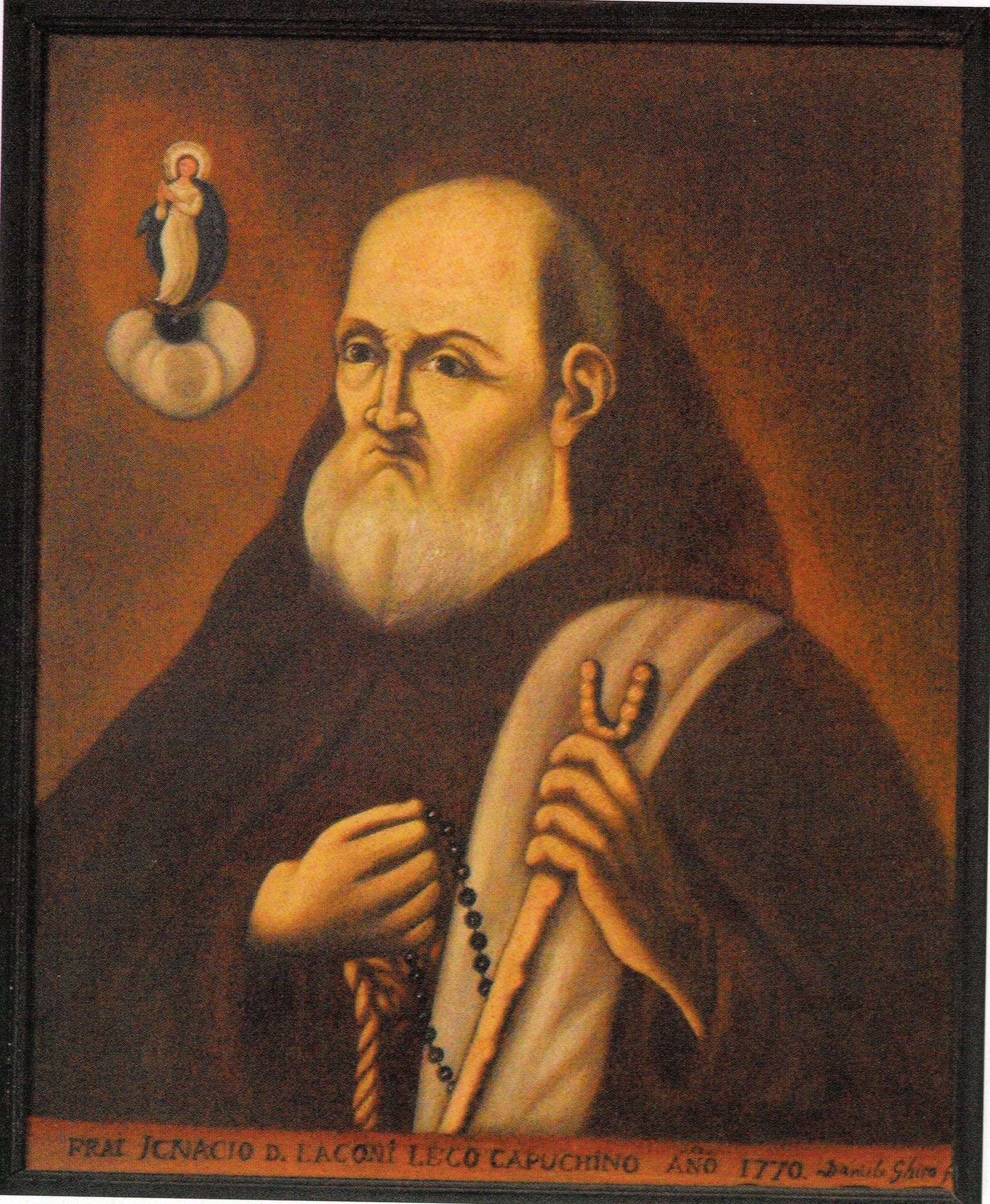 Portrait
Portrait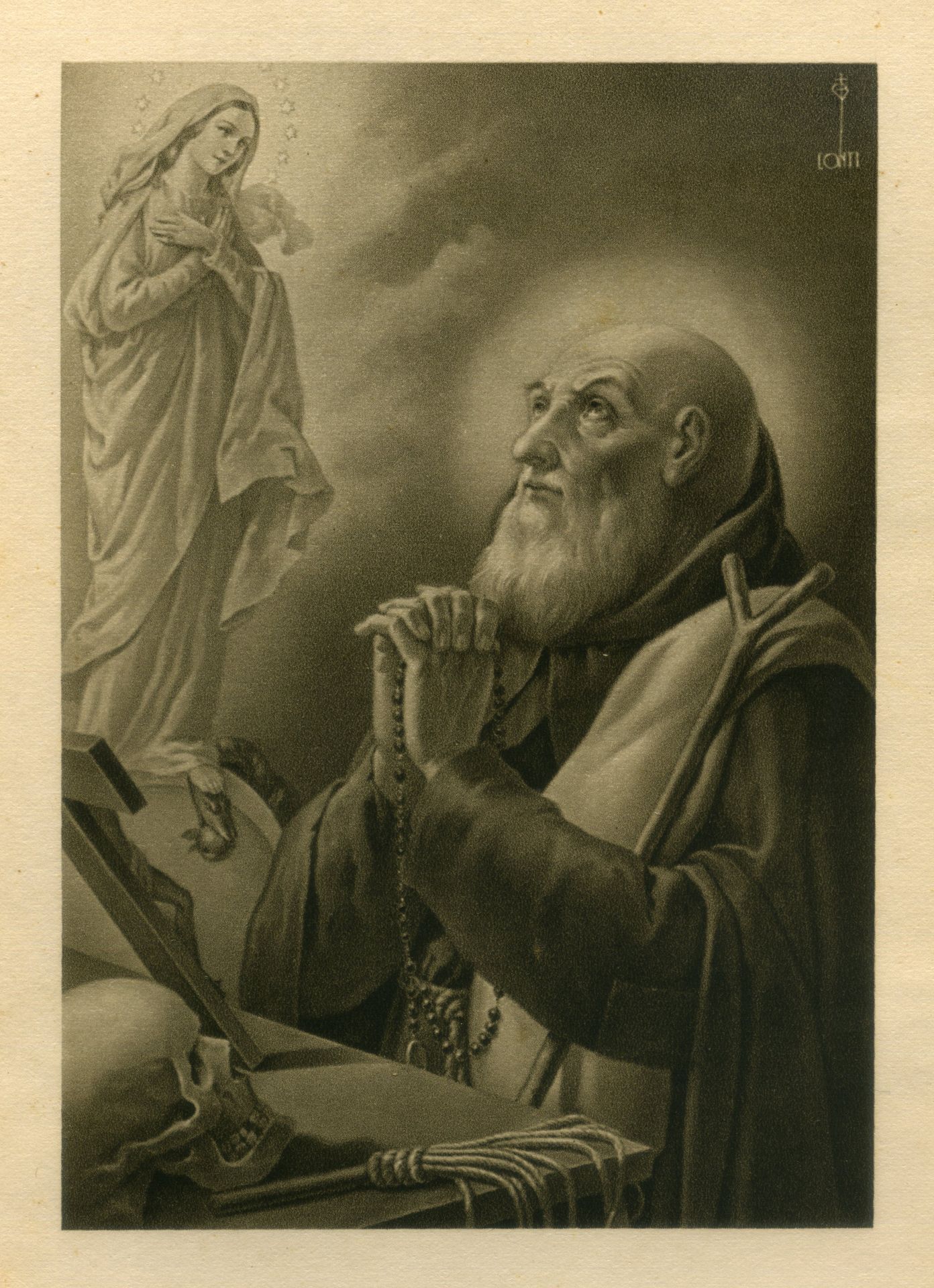 Portrait
Portrait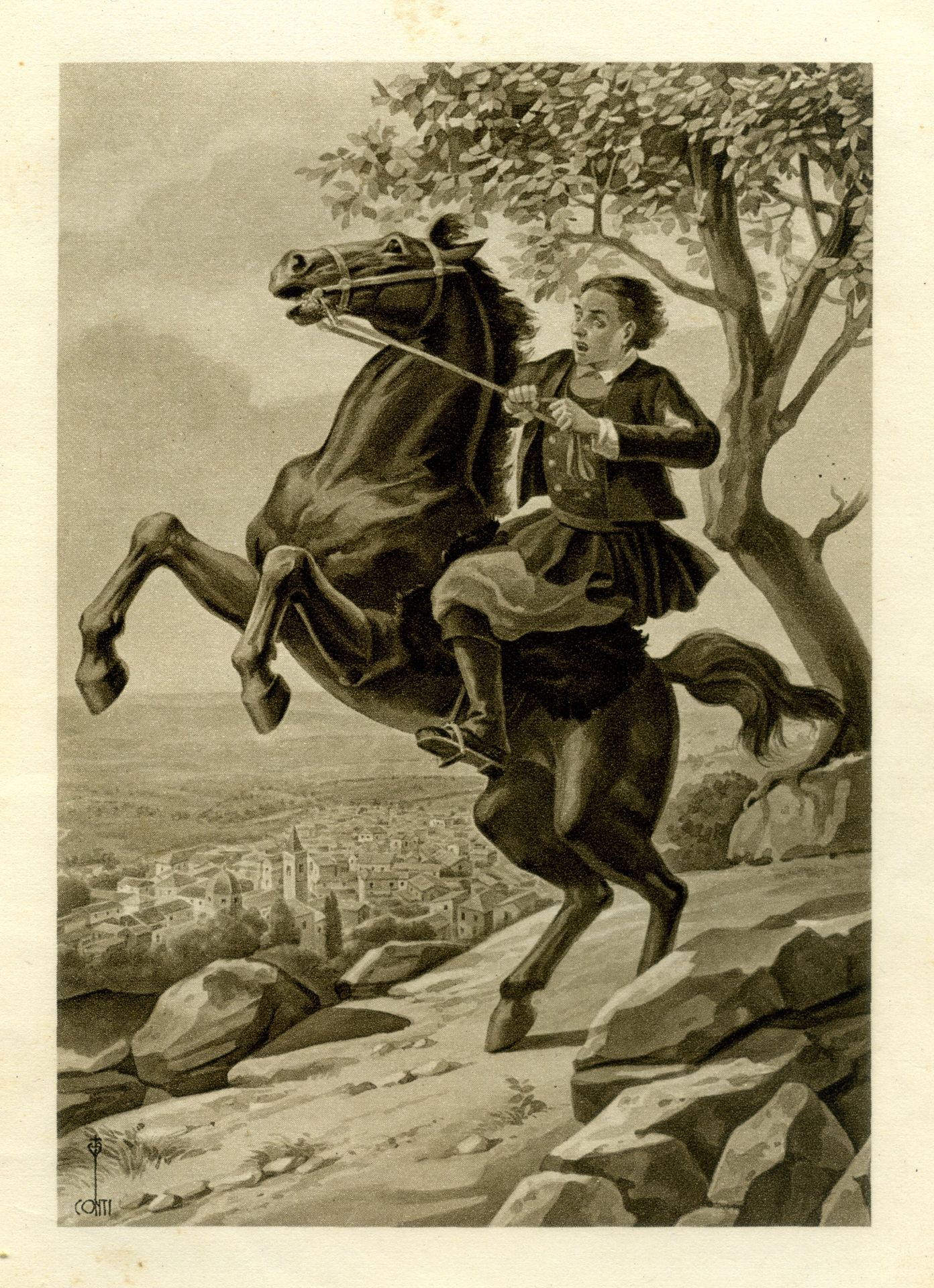 His horse suddenly shied and began running uncontrollably
His horse suddenly shied and began running uncontrollably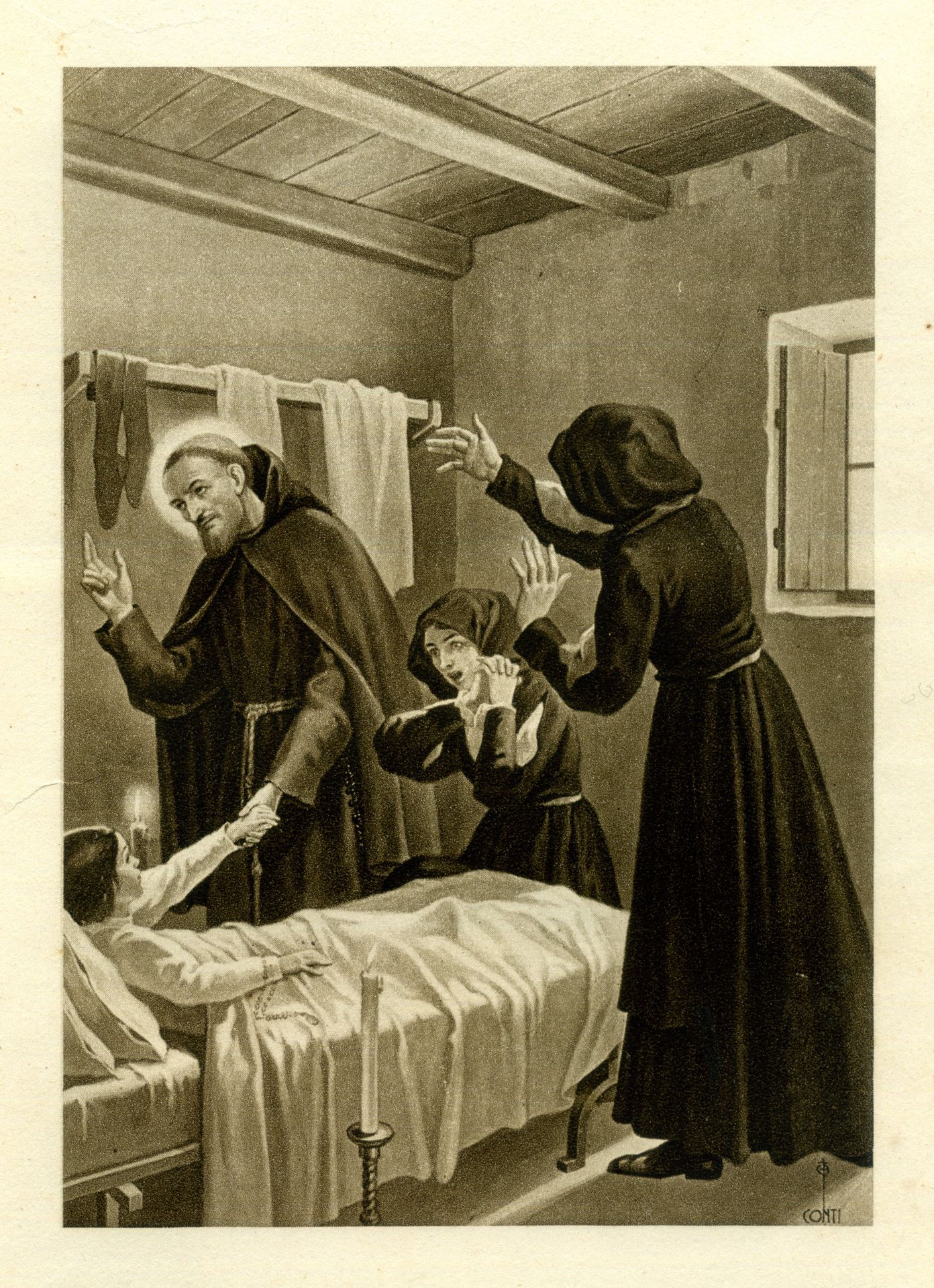 Ignatius was venerated by everyone for the many miracles he performed
Ignatius was venerated by everyone for the many miracles he performed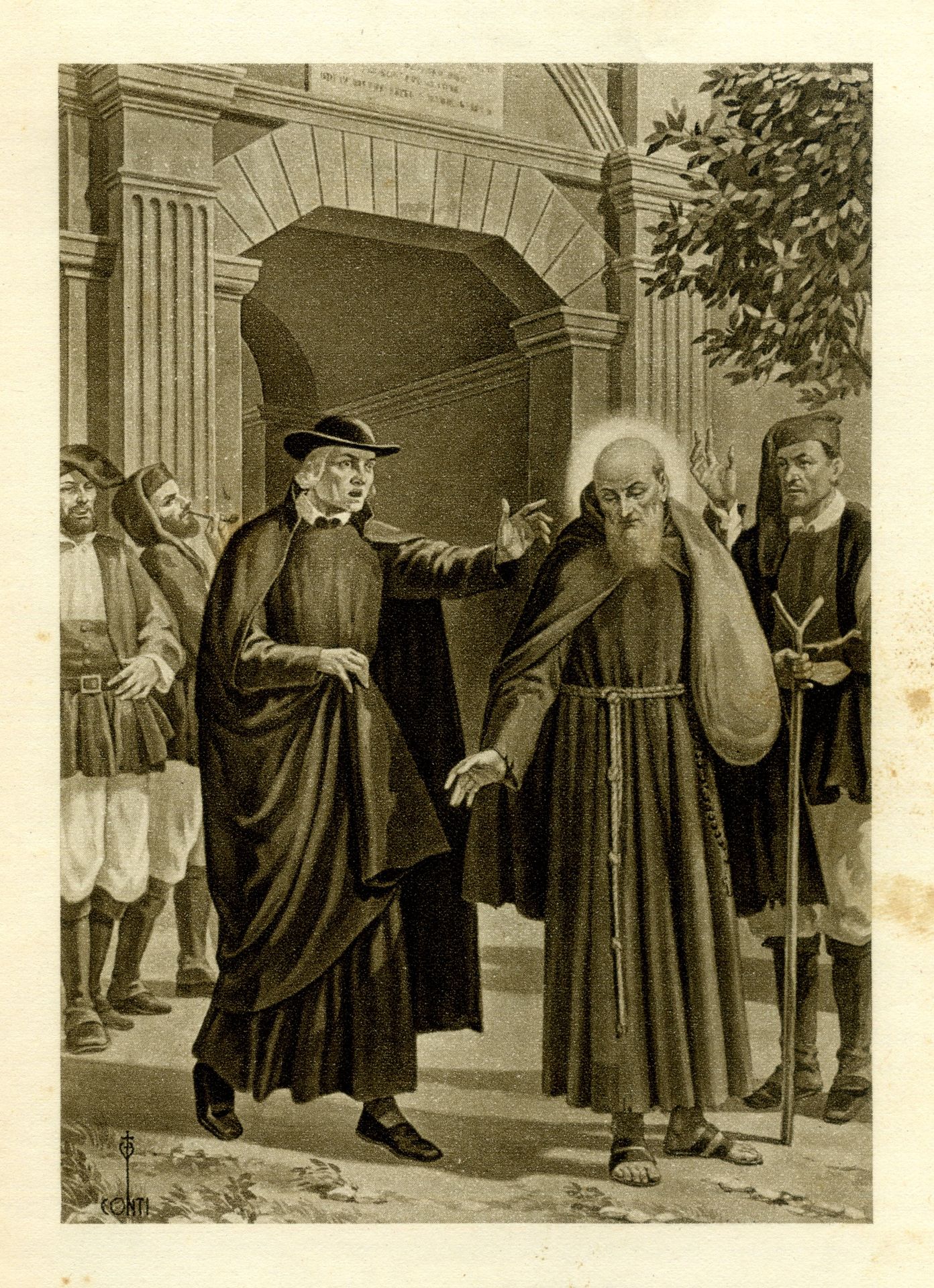 For forty years, Cagliari was the field of his apostolate
For forty years, Cagliari was the field of his apostolate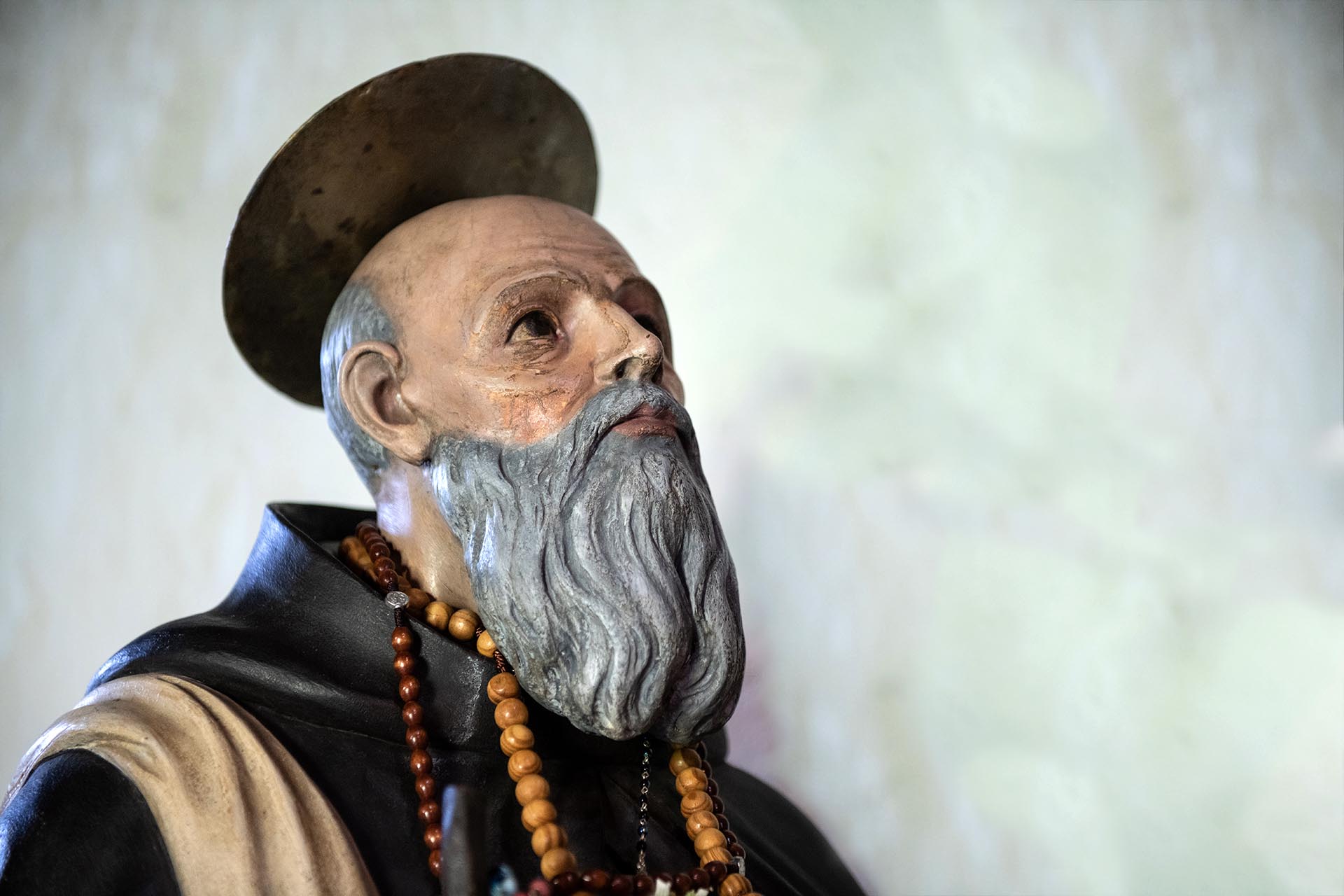 St. Ignatius (Ph. Irene Ollargiu)
St. Ignatius (Ph. Irene Ollargiu)